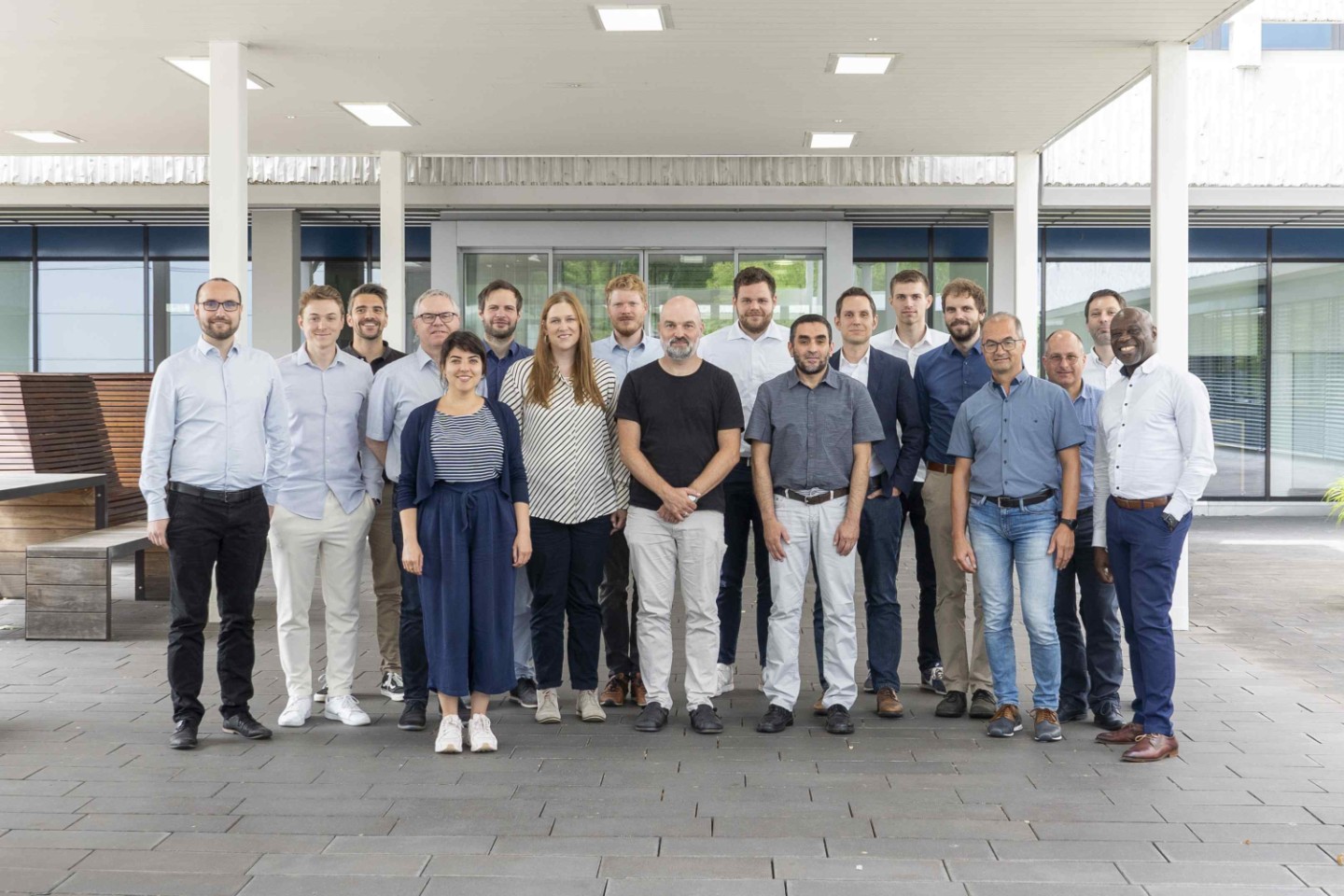Batteries on wheels

In the GaN4EmoBiL project, partners from research and industry are working together to develop a cost-effective and efficient bidirectional charging technology for electric vehicles.
(c) Blue Planet Studio – adobe.stock.com; Fraunhofer IAF
New charging technology to make e-cars suitable for mass use as mobile power storage units.
Bidirectional charging enables electric vehicles to be both charged and discharged as needed. E-cars can thus serve as mobile electricity storage units and contribute to increasing the flexibility of the energy system. To ensure that bidirectional charging can be used on a broad scale, a consortium led by Fraunhofer IAF is researching innovative charging technologies: In the recently launched project GaN4EmoBiL, the partners are developing new semiconductor, device and system technologies for the 800 V class.
Bidirectional charging allows electric cars to be charged with electricity from renewable sources and discharged as needed during periods when no wind or solar energy is being produced. Consumers could use this electricity for other electrical devices or supply it to the power grid, thus contributing to energy security. However, previous technological approaches do not meet the demands for cost and efficiency. There is a lack of intelligent and cost-effective bidirectional charging systems to connect batteries, the grid, local generators and consumers with high efficiency and high power density.
Research project GaN4EmoBiL launched
The Fraunhofer Institute for Applied Solid State Physics IAF, the University of Stuttgart, Robert Bosch GmbH and Ambibox GmbH have now taken up this challenge in the recently launched research project “GaN4EmoBiL — GaN power semiconductors for electromobility and system integration through bidirectional charging.” The consortium’s goal is to demonstrate an intelligent and cost-effective bidirectional charging system using new semiconductor devices, device concepts and system components. The three-year project is funded by the German Federal Ministry of Economic Affairs and Climate Action (BMWK) as part of the “Elektro-Mobil” program.
“Our project aims to connect batteries, renewable energies and electrical consumers in an economical and flexible way. Through bidirectional charging solutions, the previously unused batteries of parking electric vehicles will make a greater contribution to increasing the flexibility of the energy system and avoiding CO2 emissions in the future,” says Dr. Stefan Mönch, researcher in the field of power electronics at Fraunhofer IAF and project coordinator of GaN4EmoBiL.
“In future, efficient, small-scale and intelligent charging infrastructures in electromobility will contribute to overcoming social challenges”, says Dr. Etienne Tchonla, R&D Director at Ambibox.
Previous solutions are expensive, inefficient or too complex
To date, initial bidirectional medium-power DC wallboxes for batteries up to 800 V use power semiconductor devices, which are not yet optimal for this application: They are either efficient but expensive (silicon carbide) or low-cost but less efficient (silicon). Today available 650 V transistors made of gallium nitride on silicon (GaN-on-Si) are inexpensive and efficient, but require a complex circuit due to insufficient voltage rating.
To integrate as many batteries as possible bidirectionally, the cost, efficiency and compactness of charging solutions must be significantly improved. For this purpose, the project partners of GaN4EmoBiL are researching new semiconductor solutions as a first step. They want to realize a new cost-effective GaN technology on alternative substrates (for example sapphire), which enables low-cost and efficient 1200 V transistors. On this basis, they are developing new system components (bidirectional charging cable and charger) and investigating their reliability for significantly increased operating hours.
At the end of the project, demonstrators should fill the research and development gap currently existing between cost, efficiency, compactness, functionality, power class and voltage class (800 V batteries). Furthermore, the consortium aims to promote knowledge transfer between universities, research institutions and industry, train young scientists and secure national know-how in the field of electromobility.
The use of the photos is permitted exclusively in connection with this press release and with indication of the copyright.
Weitere Informationen:
http://www.iaf.fraunhofer.de/gan4emobil
https://www.iaf.fraunhofer.de/en/media-library/press-releases/project-launch-of-…
Media Contact
All latest news from the category: Power and Electrical Engineering
This topic covers issues related to energy generation, conversion, transportation and consumption and how the industry is addressing the challenge of energy efficiency in general.
innovations-report provides in-depth and informative reports and articles on subjects ranging from wind energy, fuel cell technology, solar energy, geothermal energy, petroleum, gas, nuclear engineering, alternative energy and energy efficiency to fusion, hydrogen and superconductor technologies.
Newest articles

Moving towards a close-up of a black hole and its jets
After taking the first images of black holes, the ground-breaking Event Horizon Telescope and the Global mm-VLBI Array poised to reveal how black holes launch powerful jets into space. Now,…

New Insights into the Mechanisms of Potassium Channels for Medicine
Leibniz-Forschungsinstitut für Molekulare Pharmakologie (FMP) in Berlin, the Faculty of Medicine at Kiel University, and the Leibniz Institute of Virology in Hamburg are jointly receiving funding of nearly one million…

Groundwork for the Future: How Sustainable Practices Fortify Soil Ecosystems
Sustainable land use practices offer a significant advantage over intensive land use when it comes to managing underground herbivores and soil microorganisms. Researchers from the University of Leipzig, the German…




